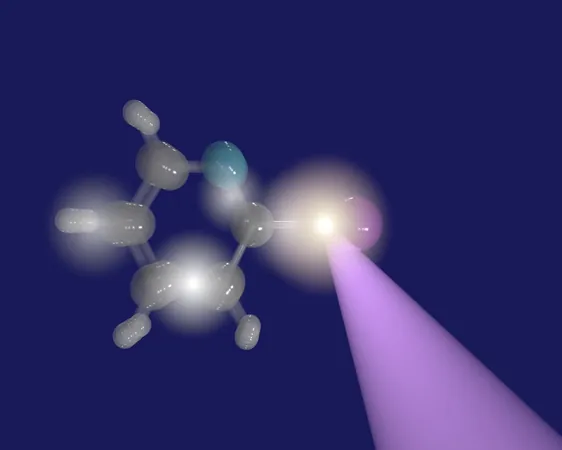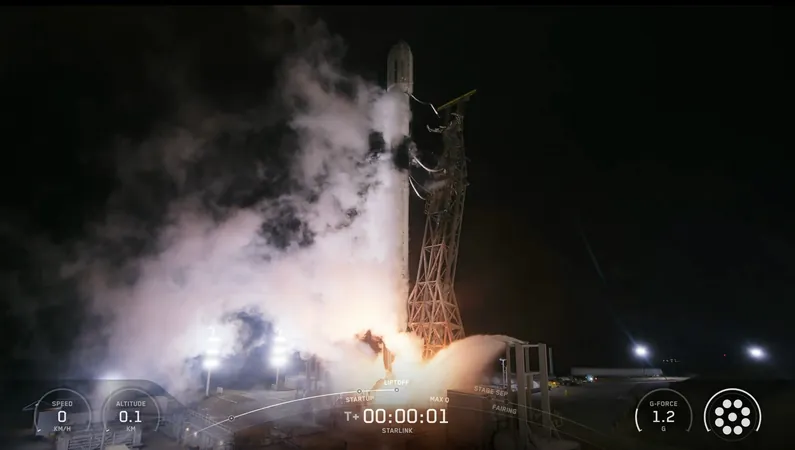
Unlocking the Quantum Dance: Scientists Capture the Eternal Motion of Atoms
2025-08-07
Author: Wei Ling
Diving Into the Quantum Dance
For most of us, understanding the quantum realm feels like navigating a mysterious dance floor. Amid the swirling uncertainties dictated by Heisenberg's principle, we can only focus on one element of a dancer at a time: position or speed. But here’s the twist: this cosmic choreography is anything but chaotic. Even when molecules are cooled to near absolute zero, their atomic constituents remain in a perpetual, silent motion known as zero-point energy.
A Groundbreaking Achievement in Quantum Measurement
After years of speculation, a team from Goethe University Frankfurt has made a groundbreaking leap by directly measuring these atomic waltzes at the European XFEL in Hamburg—the world's largest X-ray laser facility. By illuminating individual molecules, they've effectively captured snapshots of atoms engaging in their intricate dance.
Professor Till Jahnke, affiliated with both Goethe University and the Max Planck Institute, shares, 'What’s revolutionary about our findings is the realization that atoms don’t merely vibrate in isolation; they engage in synchronized motions, adhering to specific patterns.' This discovery marks the first time scientists have observed such zero-point motion in medium-sized molecules, like iodopyridine, while it resides in its lowest energy state. This phenomenon is purely quantum mechanical, eluding any classical explanation.
Dance Styles in the Quantum Realm
In this quantum dance, physicists refer to the distinct movements as vibrational modes. While understanding the motions in smaller molecules is a breeze, medium-sized molecules like iodopyridine, which comprises eleven atoms, present a complex array of 27 different vibrational modes—ranging from ballet to tango to lively folk dances!
Capturing the Dance: The Technique Behind the Magic
But how do scientists manage to photograph these dancing atoms? They employ a technique called Coulomb Explosion Imaging. This innovative method uses ultra-short, high-intensity X-ray laser pulses to initiate a controlled explosion within the molecules, which then send out high-resolution images of their structures.
As the X-ray pulse strips away electrons, the positively charged atoms repel one another, flying apart in mere trillionths of a second. This remarkable process is recorded by an advanced apparatus that captures the timing and positioning of the fragments, allowing the reconstruction of the original molecular structure.
A Look Towards the Future of Quantum Research
Developed over decades by the Atomic Physics group at Goethe University, this COLTRIMS reaction microscope has revolutionized molecular imaging. Dr. Gregor Kastirke, who notably adapted the device for use at the European XFEL, expresses his pride in witnessing such groundbreaking results. 'It’s rewarding to see the culmination of years of teamwork and preparation come to life,' he reflects.
These innovative results unlock new understandings of the quantum world. For the first time, researchers are able to visualize complex patterns of zero-point motion in larger molecules. Jahnke anticipates even more exciting ventures ahead: 'We are constantly refining our methods and gearing up for the next series of experiments. Our endgoal? To transcend the dance of atoms and capture, alongside the motion of electrons, choreographies that are faster and influenced by atomic dynamics. Imagine creating real short films of molecular processes—it's an exhilarating prospect!'
The Quantum Frontier Awaits
As quantum research continues to push boundaries, these mesmerizing glimpses into atomic life promise a future where we can observe and understand the breathtakingly beautiful dance that underlies the fabric of our universe.




 Brasil (PT)
Brasil (PT)
 Canada (EN)
Canada (EN)
 Chile (ES)
Chile (ES)
 Česko (CS)
Česko (CS)
 대한민국 (KO)
대한민국 (KO)
 España (ES)
España (ES)
 France (FR)
France (FR)
 Hong Kong (EN)
Hong Kong (EN)
 Italia (IT)
Italia (IT)
 日本 (JA)
日本 (JA)
 Magyarország (HU)
Magyarország (HU)
 Norge (NO)
Norge (NO)
 Polska (PL)
Polska (PL)
 Schweiz (DE)
Schweiz (DE)
 Singapore (EN)
Singapore (EN)
 Sverige (SV)
Sverige (SV)
 Suomi (FI)
Suomi (FI)
 Türkiye (TR)
Türkiye (TR)
 الإمارات العربية المتحدة (AR)
الإمارات العربية المتحدة (AR)